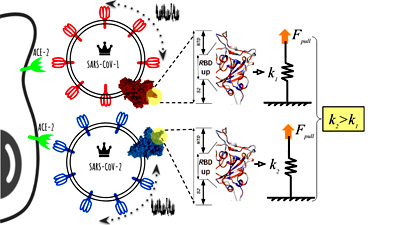Horacio V. Guzman from the Department of Theoretical Physics and his collaborators published an article in Nanoscale with the title "Quantitative determination of mechanical stability in the novel coronavirus spike protein". The spike protein of SARS-CoV-2 (CoV2) is required for cell entry and is the primary target for vaccine and therapy development. Unveiling molecular-scale mechanisms relevant to the diffusion of viral-particles and their encounter with the cell membrane receptor (ACE2) is a daunting task. They report on the gain in nanomechanical stability of the CoV2 spike protein in comparison with SARS-CoV from 2002. This result confirms that the receptor-binding domain (RBD only ∼200 amino acids) makes a significant contribution to the mechanical stability of the full spike homotrimer. The RBD plays a fundamental role as a damping element of the massive virus particle’s motion prior to cell recognition while also facilitating viral attachment, fusion, and entry. Their findings add a novel way to address the development of therapies aimed at destabilizing specific key contacts of the protein spike, which are responsible for the increased nanomechanical stability.

